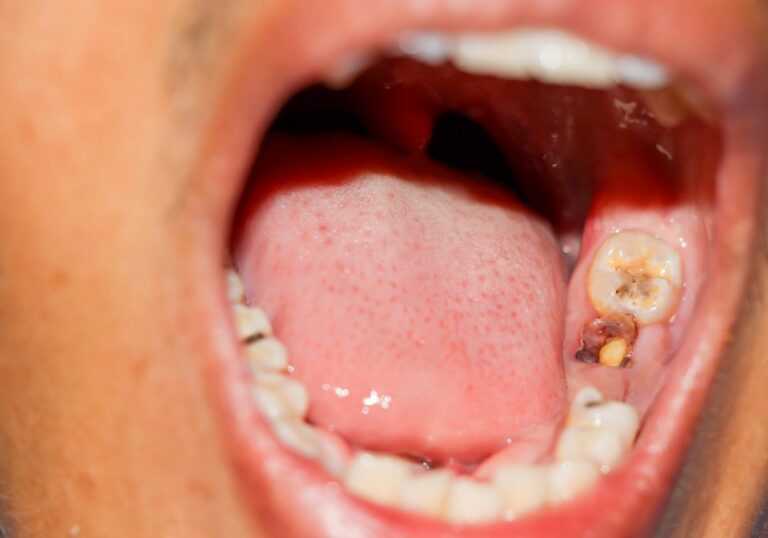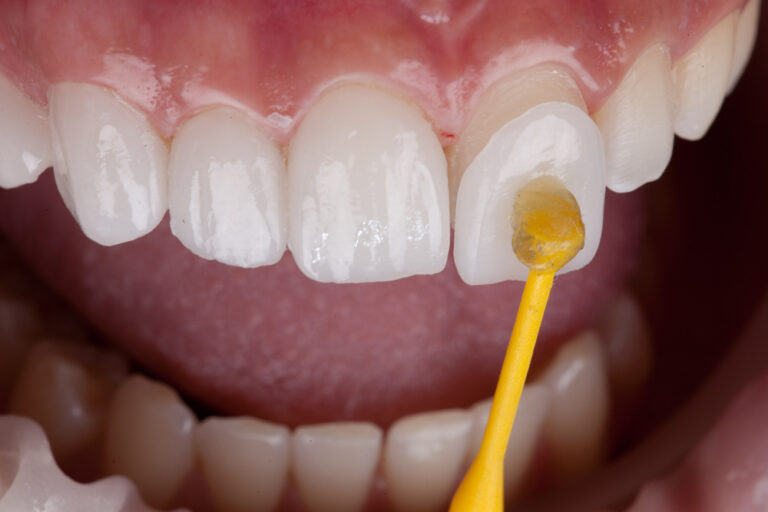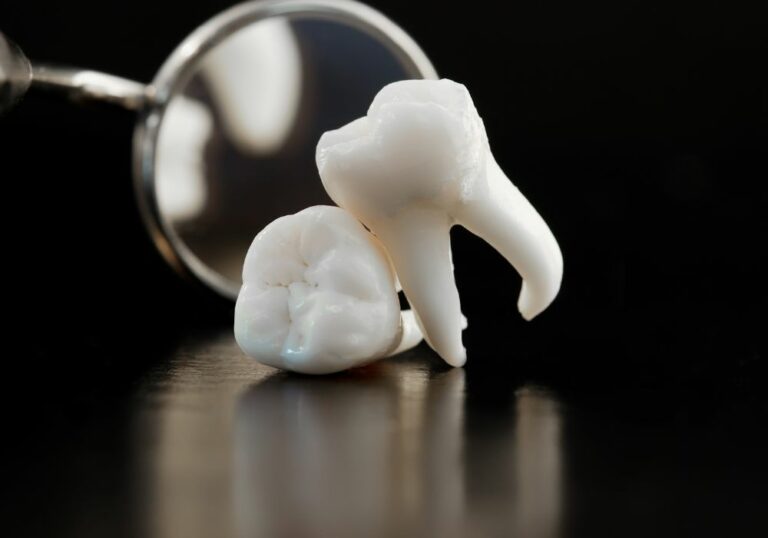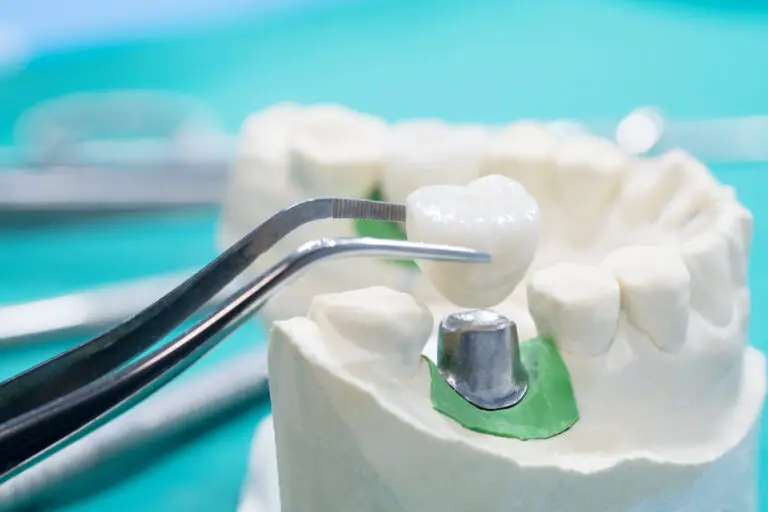Do you feel self-conscious about your yellow teeth? It’s a common concern for many people, but the good news is that yellow teeth can still be white! There are many factors that contribute to tooth color, some of which are within your control and others that are not. In this article, we’ll explore the causes of yellow teeth and share tips on how to get a brighter, whiter smile.
First of all, it’s important to understand that not all teeth are meant to be perfectly white. In fact, the natural color of teeth can range from off-white to yellowish-gray, depending on factors such as genetics and age. However, if your teeth are significantly yellow or stained, it could be a sign of poor oral hygiene or other underlying health issues. It’s always a good idea to consult with your dentist to rule out any potential problems.
There are many ways to whiten yellow teeth, both at home and with the help of a dental professional. From brushing and flossing regularly to using whitening toothpaste and undergoing professional whitening treatments, there are plenty of options to choose from. Keep reading to learn more about how to get the bright, white smile you’ve always wanted!
Understanding Tooth Discoloration
If you’re wondering why your teeth are yellow, it’s important to understand that tooth discoloration is a common dental issue that affects many people. There are several reasons why your teeth may be discolored, ranging from lifestyle habits to underlying medical conditions. In this section, we’ll explore some of the most common causes of yellow teeth and the different types of tooth stains.
Causes of Yellow Teeth
There are several reasons why your teeth may be yellow, including:
- Diet: Certain foods and drinks, such as coffee, tea, red wine, and soda, can stain your teeth over time. Foods high in sugar and simple carbohydrates can also contribute to yellowing.
- Tobacco Use: Smoking or chewing tobacco can cause yellowing of the teeth.
- Poor Oral Hygiene: Inadequate brushing and flossing can lead to plaque buildup, which can cause yellowing.
- Age: As you age, the enamel on your teeth begins to wear away, which can cause your teeth to appear yellow.
- Genetics: Some people are born with thinner enamel or softer dentin, which can cause teeth to appear more transparent and yellow.
- Medical Conditions: Certain medical conditions, such as celiac disease and liver disease, can cause yellowing of the teeth.
Types of Tooth Stains
There are two main types of tooth stains: extrinsic and intrinsic.
- Extrinsic Stains: These are stains on the surface of the tooth caused by external factors such as food, drink, and tobacco use. Extrinsic stains can often be removed with professional teeth cleaning or at-home whitening treatments.
- Intrinsic Stains: These are stains that occur within the tooth itself and are caused by factors such as aging, genetics, and certain medical conditions. Intrinsic stains are often more difficult to remove and may require more intensive whitening treatments.
In conclusion, yellow teeth can be caused by a variety of factors, including diet, tobacco use, poor oral hygiene, age, genetics, and medical conditions. Understanding the different types of tooth stains can help you determine the best course of action for whitening your teeth.
The Science Behind Teeth Whitening
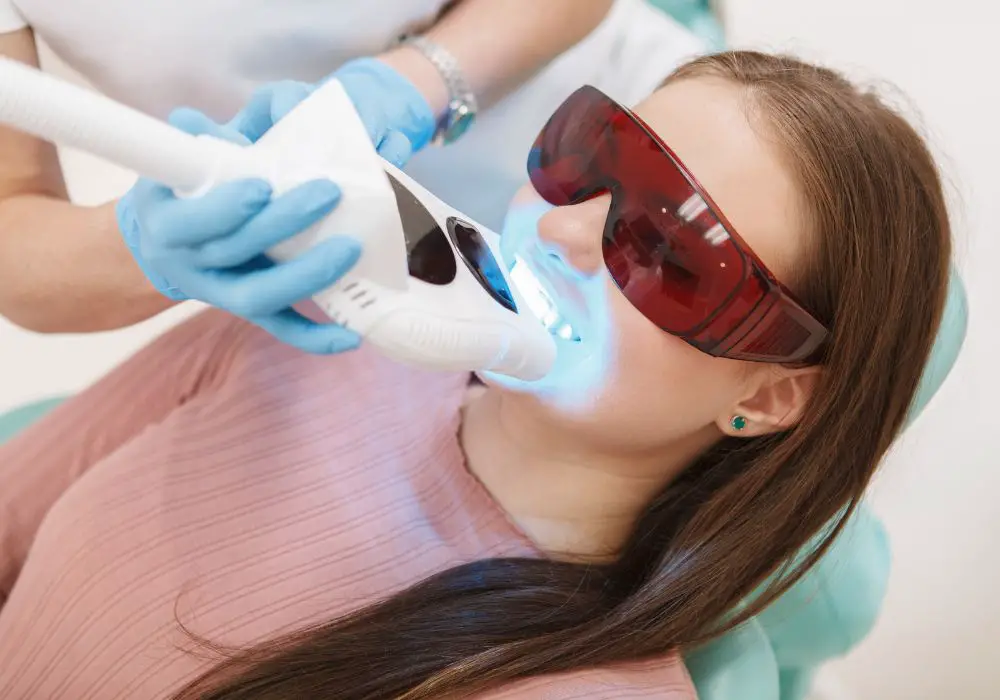
Teeth whitening is a popular cosmetic treatment that can help you achieve a brighter, more youthful-looking smile. But have you ever wondered how it works? In this section, we’ll take a closer look at the science behind teeth whitening.
The outer layer of your teeth, known as the enamel, is made up of tiny mineral crystals that reflect light. When your teeth are healthy and clean, they appear white and shiny. However, over time, the enamel can become stained or discolored due to a variety of factors, such as:
- Consuming dark-colored foods and beverages, such as coffee, tea, and red wine.
- Using tobacco products, such as cigarettes and chewing tobacco.
- Poor oral hygiene, which can lead to plaque buildup and yellowing of the teeth.
- Aging, as the enamel naturally wears down and becomes thinner.
Teeth whitening treatments work by using special chemicals to break down the stains on your teeth and remove them. There are several different types of teeth whitening treatments available, including:
- In-office whitening: This treatment is performed by a dental professional and typically involves the use of a high-concentration bleaching agent, such as hydrogen peroxide. The bleaching agent is applied to your teeth and activated with a special light or laser. This type of treatment can produce dramatic results in just one visit, but it can also be expensive and may cause some sensitivity.
- At-home whitening: This type of treatment involves using a custom-fitted tray and a lower-concentration bleaching agent, such as carbamide peroxide. You wear the tray for a specified amount of time each day, usually for several weeks. This type of treatment is more affordable than in-office whitening, but it may take longer to see results.
It’s important to note that teeth whitening treatments are not permanent and may need to be repeated periodically to maintain the results. Additionally, not everyone is a good candidate for teeth whitening, as it may not be effective for certain types of stains or discoloration.
Overall, teeth whitening can be a safe and effective way to improve the appearance of your smile. However, it’s important to talk to your dentist before starting any whitening treatment to ensure that it’s right for you.
Professional Teeth Whitening Procedures
If you’re looking for a more drastic change in the color of your teeth, professional teeth whitening might be the way to go. Here are two options to consider:
In-Office Whitening
In-office whitening is a quick and effective way to whiten your teeth. It typically involves a high-concentration bleaching gel that is applied to your teeth by a dental professional. The gel is then activated with a special light or laser, which helps to break down stains and discoloration.
One of the biggest advantages of in-office whitening is that you can see results in just one visit. The procedure usually takes about an hour, and you can leave the office with a noticeably brighter smile. In-office whitening is also generally safe and effective, and it can be customized to meet your specific needs.
However, in-office whitening can be expensive, with prices ranging from $500 to $1,000 or more. It can also cause temporary tooth sensitivity, which can be uncomfortable for some people.
At-Home Professional Whitening Kits
At-home professional whitening kits are another option to consider. These kits typically come with a custom-fitted tray that you wear over your teeth, as well as a lower-concentration bleaching gel. You wear the tray for a certain amount of time each day (usually for a few hours or overnight), and the gel helps to whiten your teeth over time.
One of the advantages of at-home whitening kits is that they are generally more affordable than in-office whitening. They also allow you to whiten your teeth in the comfort of your own home, on your own schedule. And because the concentration of the bleaching gel is lower, you may experience less tooth sensitivity.
However, at-home whitening kits can take longer to produce results than in-office whitening (usually a few weeks to a month). And because you are applying the gel yourself, there is a greater risk of uneven whitening or accidental gum irritation.
Overall, both in-office whitening and at-home professional whitening kits can be effective ways to whiten your teeth. The best option for you will depend on your budget, your schedule, and your personal preferences.
DIY Teeth Whitening Methods
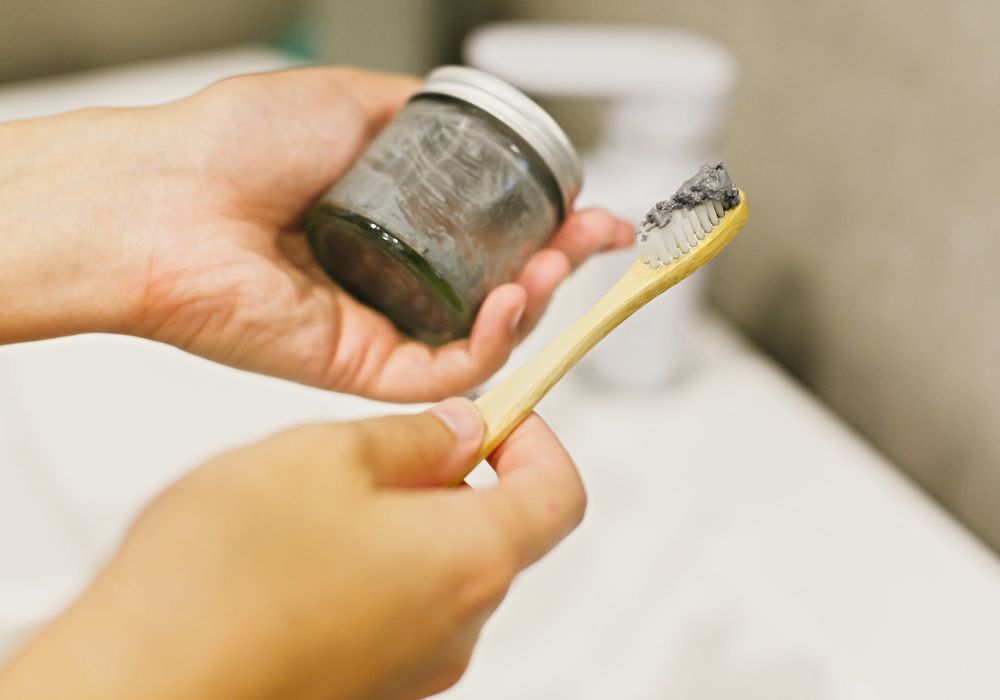
If you’re looking to whiten your yellow teeth, there are a few DIY methods you can try. Here are two popular options:
Whitening Toothpastes
Whitening toothpastes are a popular option for those looking to brighten their teeth. They work by using abrasive particles to remove surface stains on your teeth. Some whitening toothpastes also contain hydrogen peroxide, which can help to lighten the color of your teeth.
When choosing a whitening toothpaste, look for one that has the American Dental Association (ADA) seal of approval. This means that the toothpaste has been tested and proven to be safe and effective.
It’s important to note that whitening toothpastes can only remove surface stains and will not change the natural color of your teeth. If you have deep stains or discoloration, you may need to try a different method.
Home Remedies
There are also several home remedies that you can try to whiten your teeth. Here are a few popular options:
- Baking soda: Mix a small amount of baking soda with water to create a paste. Brush your teeth with the paste for 2 minutes, then rinse thoroughly.
- Hydrogen peroxide: Mix equal parts hydrogen peroxide and water. Swish the mixture around in your mouth for 1 minute, then spit it out and rinse your mouth with water.
- Apple cider vinegar: Mix 2 teaspoons of apple cider vinegar with 1 teaspoon of baking soda. Brush your teeth with the mixture for 1-2 minutes, then rinse thoroughly.
It’s important to use caution when using home remedies to whiten your teeth, as some of them can be abrasive and may damage your tooth enamel. It’s also important to note that home remedies may not be as effective as professional treatments.
Overall, if you’re looking to whiten your yellow teeth, there are several DIY methods you can try. However, it’s important to remember that these methods may not be as effective as professional treatments and could potentially cause damage to your teeth if not used correctly.
Maintaining Your White Teeth

If you want to keep your teeth white, there are a few things you can do to maintain their brightness. Here are some tips:
Oral Hygiene Tips
The most important thing you can do to keep your teeth white is to practice good oral hygiene. This means brushing your teeth at least twice a day and flossing once a day. You should also use mouthwash to kill bacteria and freshen your breath.
When you brush your teeth, make sure you use a fluoride toothpaste and brush for at least two minutes. Be sure to brush all surfaces of your teeth, including the fronts, backs, and chewing surfaces. You should also brush your tongue to remove bacteria and freshen your breath.
Foods and Drinks to Avoid
Certain foods and drinks can stain your teeth and make them appear yellow. Here are some foods and drinks to avoid or consume in moderation:
| Foods and Drinks to Avoid |
|---|
| Coffee |
| Tea |
| Red wine |
| Soda |
| Tomato sauce |
| Curry |
| Berries |
| Apples |
| Potatoes |
| Beets |
If you do consume these foods and drinks, be sure to rinse your mouth with water afterward to help prevent staining. You can also use a straw to drink beverages to help minimize contact with your teeth.
In addition to avoiding certain foods and drinks, it’s important to limit your intake of sugar and simple carbohydrates. These can lead to tooth decay and discoloration. Instead, choose foods that are high in fiber, such as fruits and vegetables.
By following these tips, you can help keep your teeth white and bright. Remember to visit your dentist regularly for cleanings and checkups to maintain good oral health.
Frequently Asked Questions
How can I naturally whiten my yellow teeth?
There are a few natural remedies that can help whiten yellow teeth. Brushing your teeth with baking soda or using hydrogen peroxide as a mouthwash can help remove surface stains. Eating crunchy fruits and vegetables like apples and carrots can also help scrub away stains on your teeth.
What are some effective teeth whitening methods for yellow teeth?
There are many effective teeth whitening methods for yellow teeth. Over-the-counter whitening strips, gels, and toothpaste can help remove surface stains. Professional teeth whitening treatments at the dentist’s office can also provide dramatic results.
Is it possible to turn yellow teeth white?
Yes, it is possible to turn yellow teeth white with the right treatments. Depending on the severity of the discoloration, it may take multiple treatments or a combination of treatments to achieve the desired results.
Are yellow teeth genetic or caused by something else?
Yellow teeth can be caused by a variety of factors, including genetics, aging, and lifestyle habits like smoking and consuming certain foods and drinks. While genetics can play a role in the color of your teeth, lifestyle choices and environmental factors can also contribute to discoloration.
What are the causes of yellow teeth?
Yellow teeth can be caused by a variety of factors, including genetics, aging, lifestyle habits like smoking and consuming certain foods and drinks, poor oral hygiene, and certain medications. In some cases, yellow teeth may be a sign of an underlying health condition.
How long does it take for yellow teeth to turn white with teeth whitening treatments?
The length of time it takes for yellow teeth to turn white with teeth whitening treatments can vary depending on the severity of the discoloration and the type of treatment used. Over-the-counter treatments may take several weeks to show results, while professional treatments at the dentist’s office can provide dramatic results in as little as one visit.


